Surrounded by neighbours, down a long driveway, a courtyard home by Andrew Sexton Architecture more than overcomes its infill site
[jwp-video n=”1″]
New Zealand’s best city home manages to feel private in a busy setting
It took imagination to see it. Could you take an infill section encircled by neighbours, lying at the bottom of a snaking, vertiginous driveway, and make it the setting for a home so private it almost feels like a hideaway?
With the acceleration of higher density living in our major cities, any kind of privacy can be hard won. And one might have thought that for this uncompromising site on Wellington’s hip Miramar peninsula, such a fancy might have been in vain. So when one crosses the schist pavers and enters the compact courtyard house that architects Andrew Sexton and Hannah Griffin designed for clients Kris and Jess Sowersby, one can only marvel at how an almost-public space has been made so private.
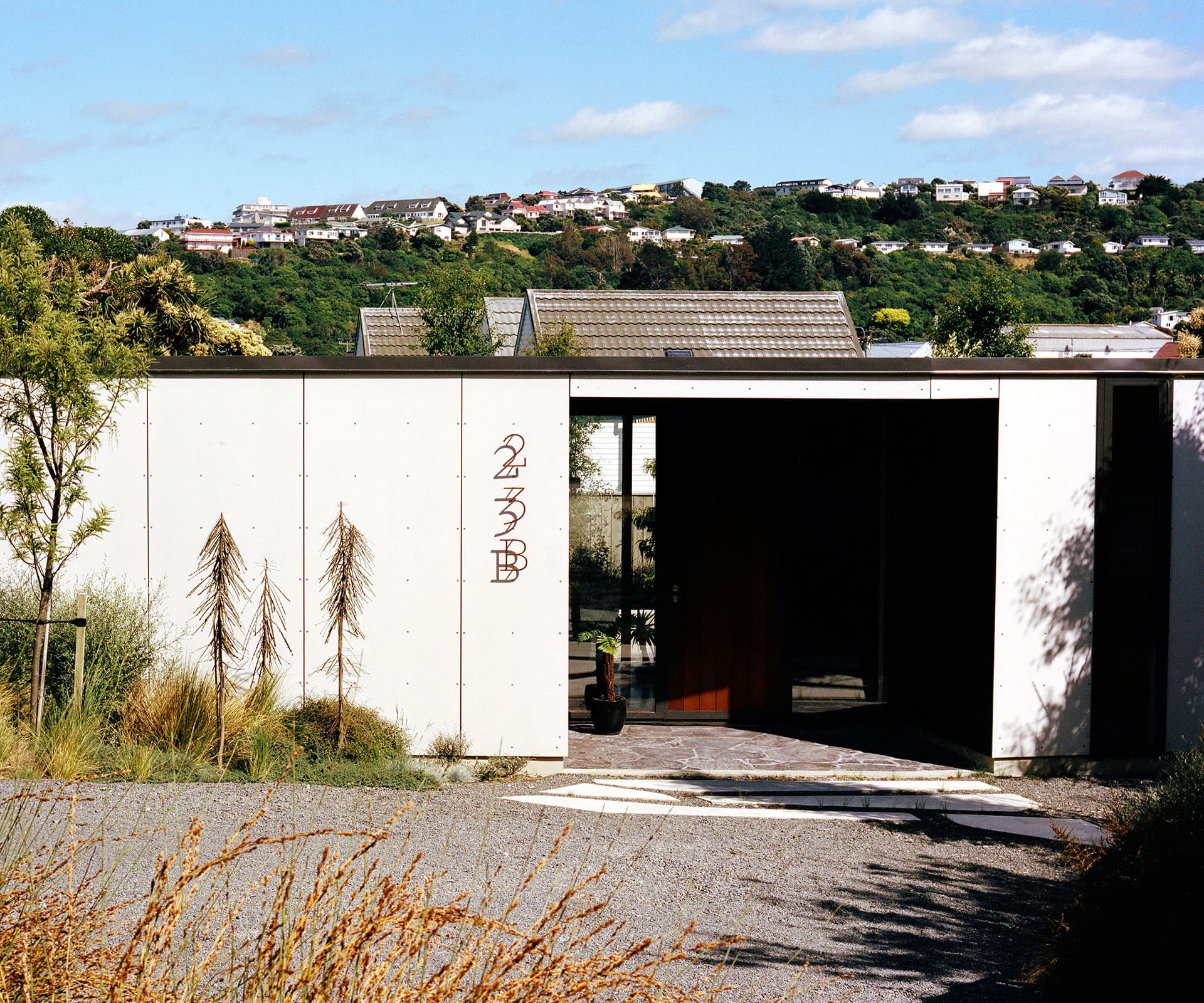
“A lot of people would have looked at this section and thought ‘woah, it has six neighbours!’,” says Sexton. “When we first saw it, it did seem like an overlooked fishbowl. Designing for that was the key.”
The home is shaped in a semi-circle around a surprisingly generous, two-level outdoor living area, with the home’s clam-shell white exterior pushing out to the boundaries and serving as both shield and shelter. The inner walls, alternating cedar cladding with large, full-length windows, turn the home in on itself to create privacy and a sense of, well, an inner life.
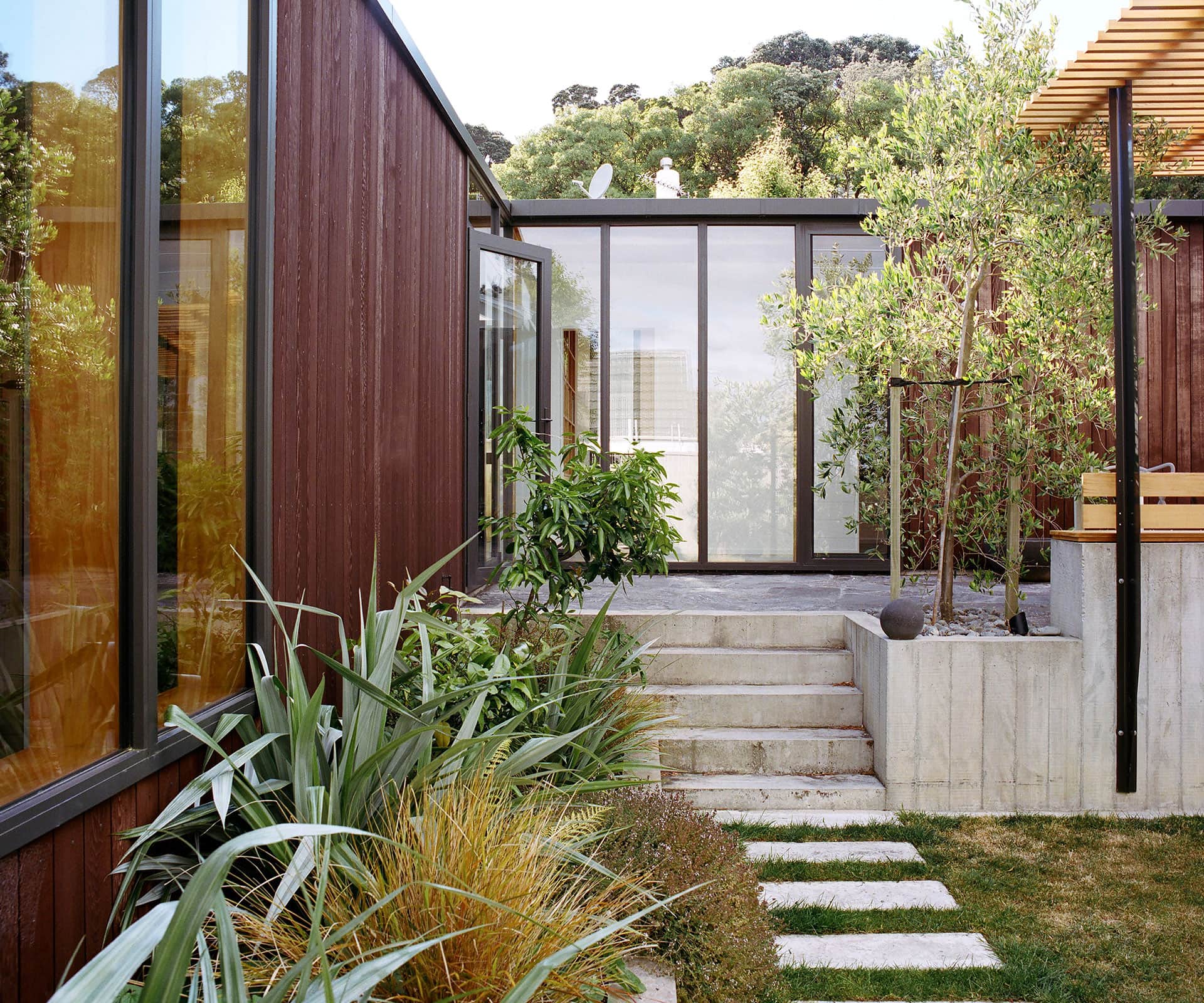
“I like the feeling of enclosure that courtyard homes provide,” says Sexton, who has designed and built a similar house for his family. “It allows you to live around the courtyard. At our home, you can be doing something here, while someone else is doing something across the way. It’s that sort of interaction across the courtyard that is really lovely. It starts to operate like a small city. It generates a sense of life.”
The courtyard’s landscaping enhances the sense of seclusion, fringing the space with native grasses and shrubs, and anchoring the whole with young specimen trees, including kowhai and pōhutukawa, which, in time, will offer the home even more privacy. The design, by Mark Newdick of Landscape Architecture Collective, edges the home’s outer shell and gravel parking space with natives, including lancewoods and tussocks, from a cohesive palette of olive greens, soft greys and earth browns.
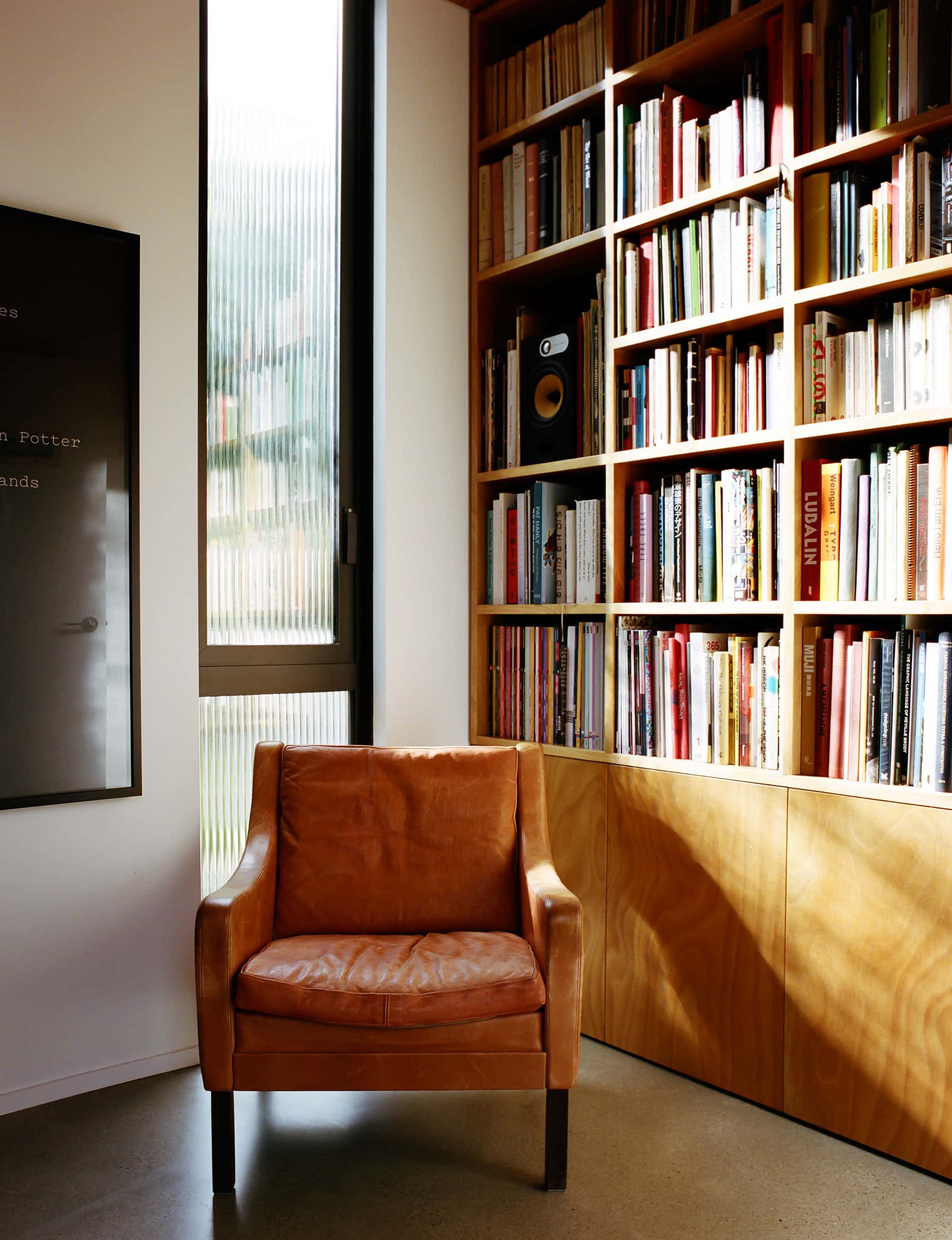
On a fine, hot Wellington afternoon in late summer, with sunlight filling the home with life and warmth, the attraction of this sheltered 494-square-metre site now seems obvious. “It was what we were looking for – flat and sunny,” says Kris. “There are a lot of south-facing cliffs in Wellington – and the view doesn’t keep you warm.”
Indeed, warmth and light were central to what Sexton jokingly describes as the couple’s “reverse brief”. Their first home – a new, but cold and sunless apartment in Cuba St – was an education in what’s important and what’s not.
“I remember Hannah and Andrew coming to our apartment and we said ‘these are the things we dislike – let’s do the opposite’,” says Jess.
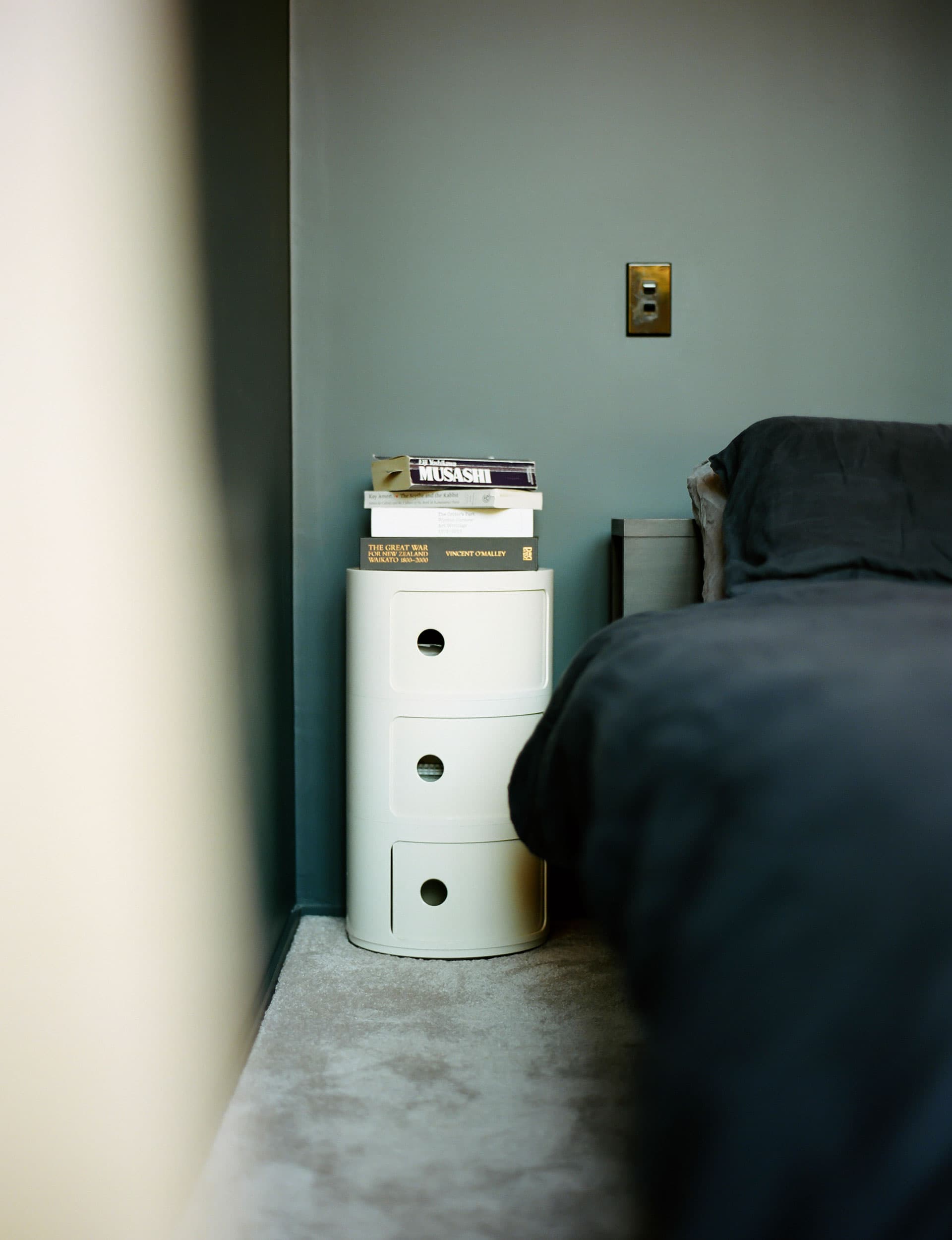
The new house had to function as home and office for the couple’s design business, Klim Type Foundry. Sexton and Griffin’s plan creates a “pinch” at the main entrance, which separates the private spaces – a roomy, minimalist main bedroom and en suite, their young daughter’s bedroom and the bathroom – from the public spaces: the kitchen, dining area, snug and private living room. In between are two compact offices, one for Kris and one for Jess.
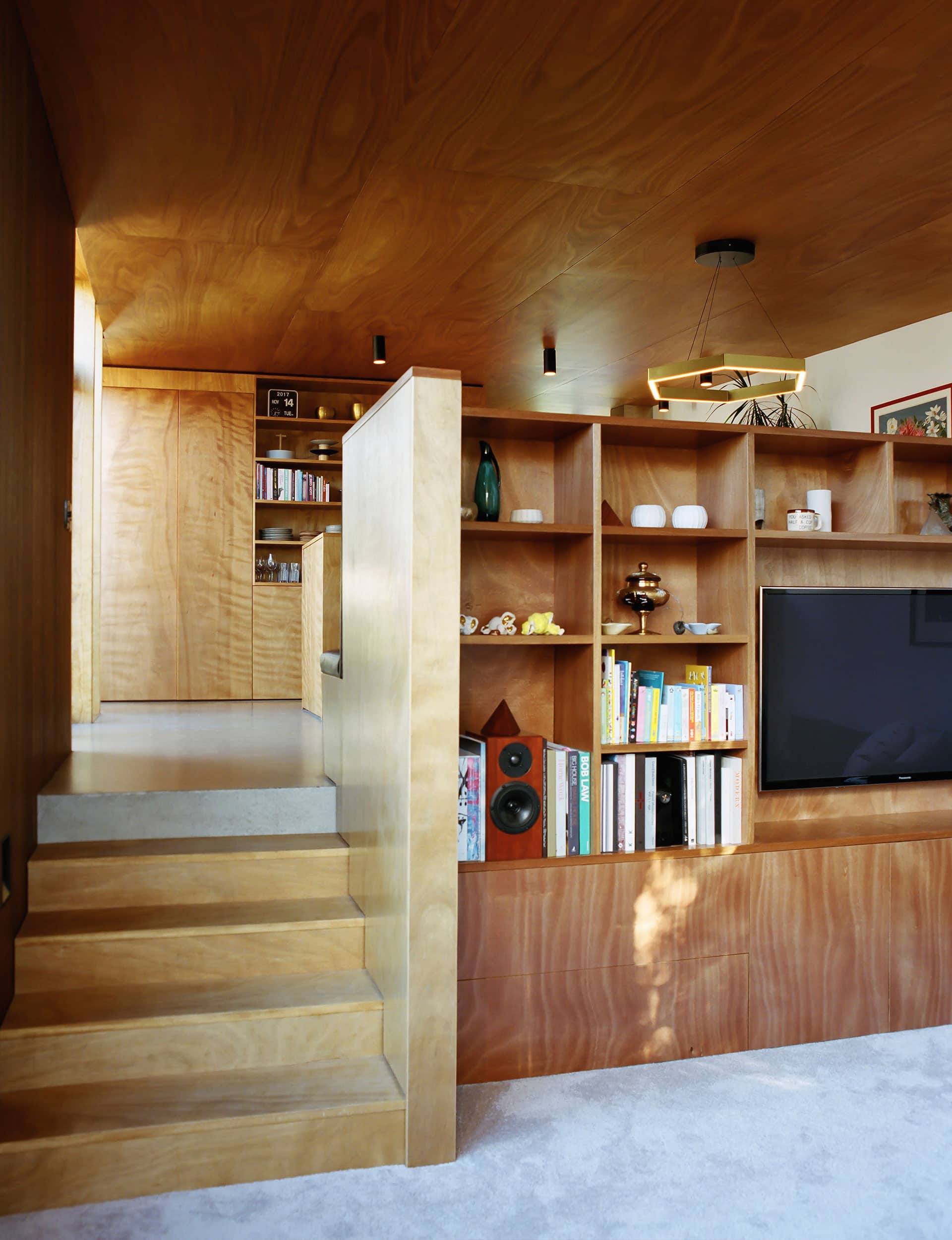
The home’s formal but glowing ambiance is created with honeyed plywood and cedar walls, and minimal plasterboard. “Wood wears in, concrete wears in, but Gib is not forgiving,” says Kris. “We didn’t want a modern-looking boxy home, and I think plasterboard gives that feel.”
The simplicity of spaces, which flow seamlessly around the U-shaped footprint, belies the craft involved in creating discreet, compact zones that seem larger than they are. The living room, set five steps below the dining area, has a large modular cabinet that creates privacy and houses the television, as well as shelving and storage. In the dining area, the cabinet forms a handsome back to a leather bench seat for the dining table, delivering more space for entertaining.
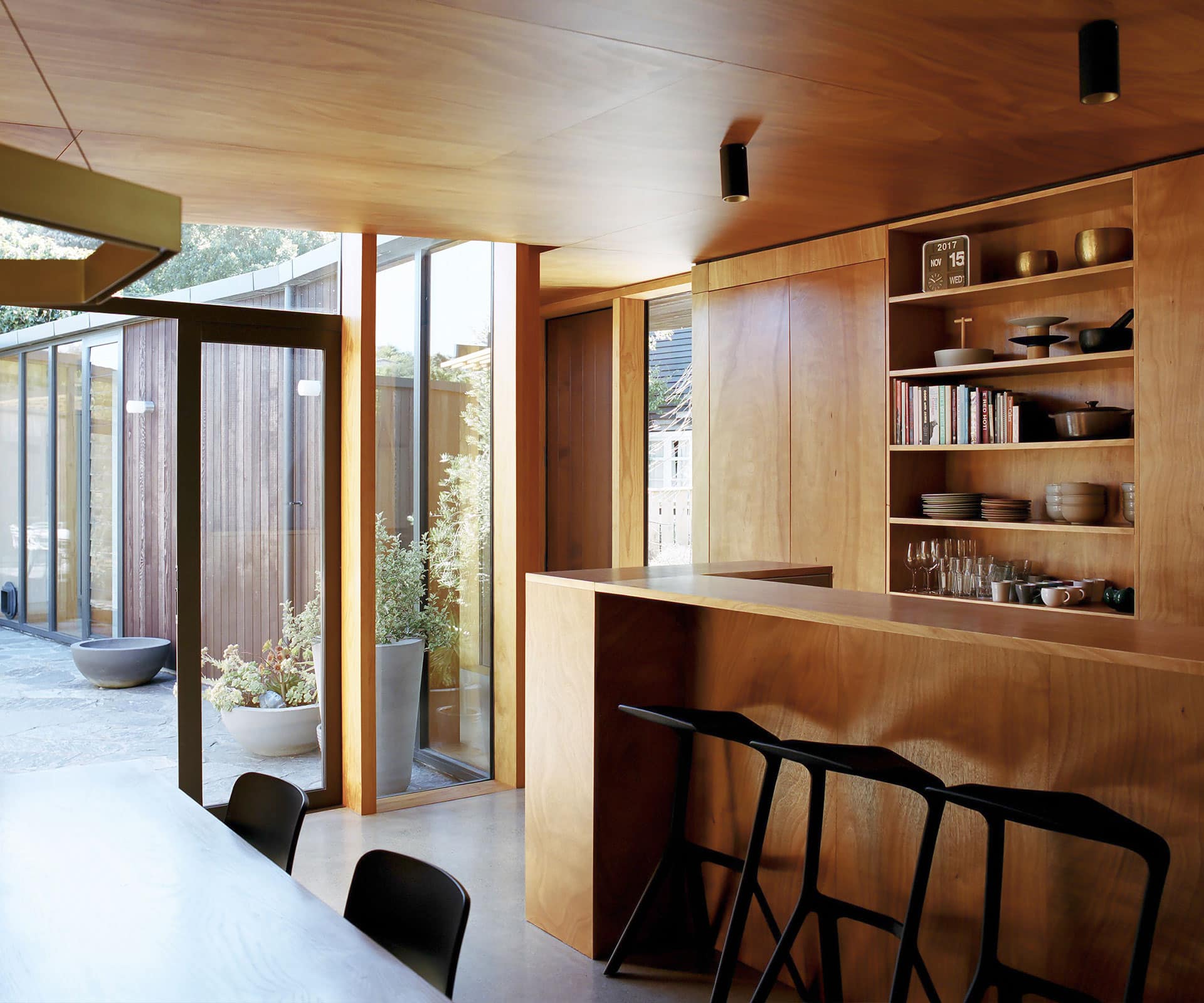
The reverse brief dictated the arrangement of social spaces, says Jess. “The lounge and dining area [in the apartment] were in one space and we never used the lounge in terms of social stuff,” she says. “Everyone was around the table and kitchen. We thought why not have the lounge as a place that was cosy and separate, and the dining and kitchen as the social area.
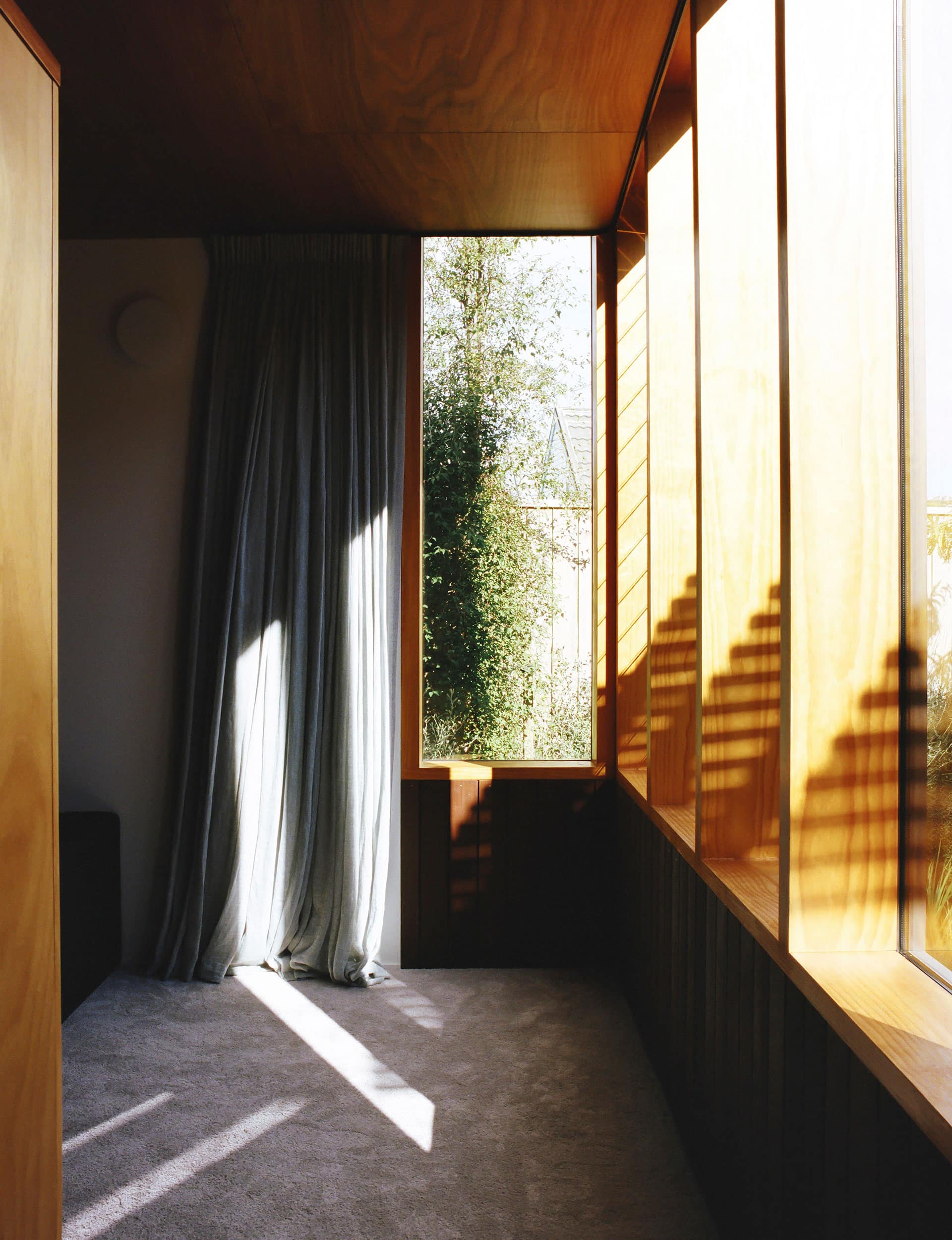
Kris and Jess’s philosophy was to build a home that harmonises with their life now, and not have a beady eye on resale. “It was really refreshing that Kris and Jess were focused on a house for them,” says Sexton. “It didn’t really matter to them how someone else might use the house in the future, it was all about how they would use it now.”
It is also, one can’t help feeling, confirmation that Sexton takes seriously his studio’s philosophy of listening carefully to clients and responding to the specifics of a site to create bespoke living that’s not just useful but poetic, too.
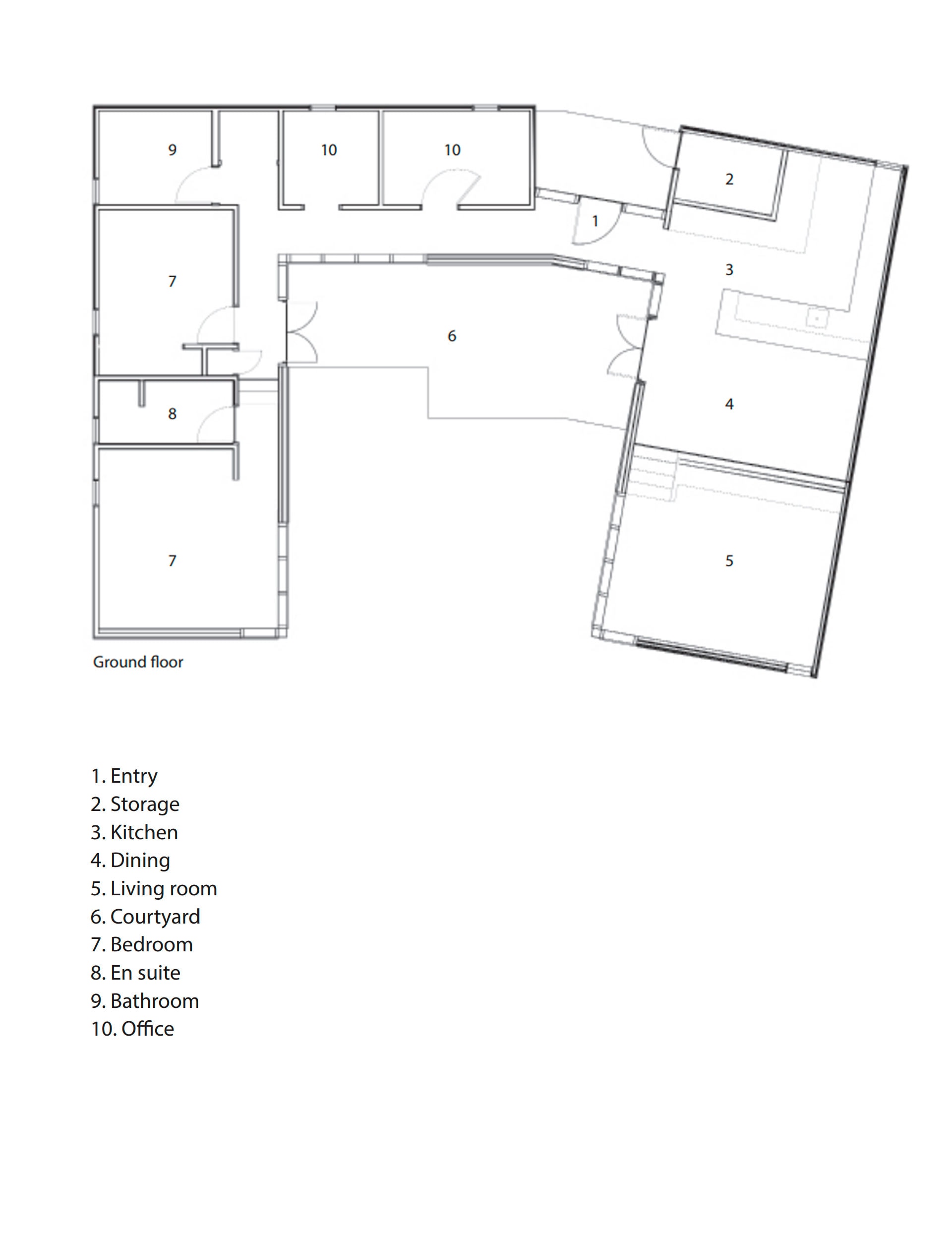
Words by: Greg Dixon. Photography by: Mary Gaudin.
[related_articles post1=”80538″ post2=”80080″]






